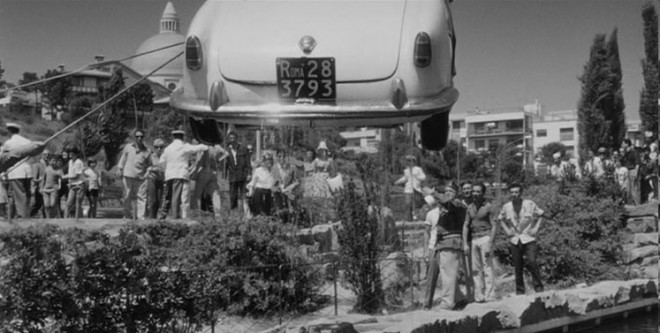Everyone complains about the tacked-on happy ending that Alice Adams is given in the famous film version that George Stevens directed. Nonsense. Given the all-round softening here of Booth Tarkington’s considerably darker, edgier 1921 novel, the original ending would no longer fit and this new one fits such fine. The film we all love—and most people do love it—resembles the book only in certain details of plot; rather than a sharp critique of American social behavior, it is a sweetly comical, tenderly nostalgic piece of Americana. And if we want the book instead, we can damn well reread it!
Nor in this “Alice Adams lite” does the harsh complexity of Alice Adams herself, Tarkington’s social-climbing mother’s daughter, survive in Katharine Hepburn’s touching, shimmering, beautifully modulated performance; rather, Hepburn perfectly suits the lighter, romantic reimagining of the book. And, Pauline Kael’s contempt for him notwithstandng, Fred MacMurray, an amiable cipher as Arthur Russell, is cast charmingly.
There is much that is wonderful in this film, including a piece of postmodernism that provides both a jolt of distancing and thematic resonance. Well into the film, by which time we are well used to the principal theme of Roy Webb’s sentimental score, on her porch Alice is beguiling Arthur with what she apparently doesn’t realize are her pretentious, somewhat annoying mannerisms. He, of course, is falling in love anyway; after all, Webb’s background music is contributing the mood that softens Alice’s barrage of defenses against her feelings of social inferiority and that makes it easy for a boy to fall in love, especially if the girl looks like young Katharine Hepburn. Cut to inside; Alice’s mother abruptly stops the music. We had been listening this time to a phonograph record! Suddenly, the vulnerability of this boy and girl becomes brutally apparent, to us in the quiet of our analytical minds, and maybe even a little to the characters, regarding themselves and each other. We all know the thrill and the poignancy of that moment in Federico Fellini’s The Nights of Cabiria (1956) when Cabiria meets musicians in the woods who are playing the same musical theme by Nino Rota that has been dominating the film’s background music. Well, Stevens’s use of a facsimile of the same procedure came two decades sooner!
The opening always breaks my heart. Alice, in preparation for one of the rare parties she is ever invited to (because she cannot get a date, her brother, Walter, will reluctantly escort her), emerges from the five-and-dime. In the street, but really in the silent pretend-world inside her head, she opens the cheap compact she has just bought and applies powder to her dull face, the delicacy of her motion an indication of the expensive quality she is pretending her new purchase to be. However, the set-piece for which Stevens’s film is famous is the summertime dinner at which Alice’s mother, with Alice’s father reluctantly in tow, hopes to impress Arthur, her daughter’s possible suitor, the one guest, with caviar and sweetbreads and all sorts of things they never normally eat and (what she thinks is) subtle talk in the direction of what a wonderful life-companion Alice would make. The meal proves too heavy for the weather that evening; hilariously, the extreme heat wilts the flimsy head-piece worn by Malena, the African-American cook/maid whom the Adamses have hired for the evening but whom mother and daughter try to pass off as their permanent help. Mostly silently, lower-class Malena registers how absurd she finds the attempt of the lower middle-class Adamses to hoodwink upper-class Arthur. Hattie McDaniel is brilliant in this cunning role. Incidentally, of interest is the vast difference in racial consciousness between unpretentious Walter and his mother and sister.
Two other performances stand out: Fred Stone as Mr. Adams, whom Alice always tries to protect and defend, and Charley Grapewin as J. A. Lamb, whose company employs him.
B(U)Y THE BOOK
MY BOOK, A Short Chronology of World Cinema, IS CURRENTLY AVAILABLE FROM THE SANDS FILMS CINEMA CLUB IN LONDON. USING EITHER OF THE LINKS BELOW, ACCESS THE ADVERTISEMENT FOR THIS BOOK, FROM WHICH YOU CAN ORDER ONE OR MORE COPIES OF IT. THANKS.
